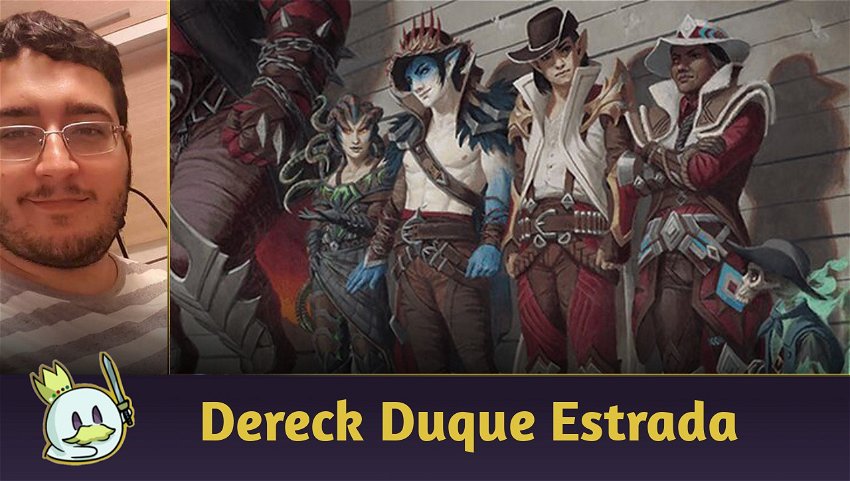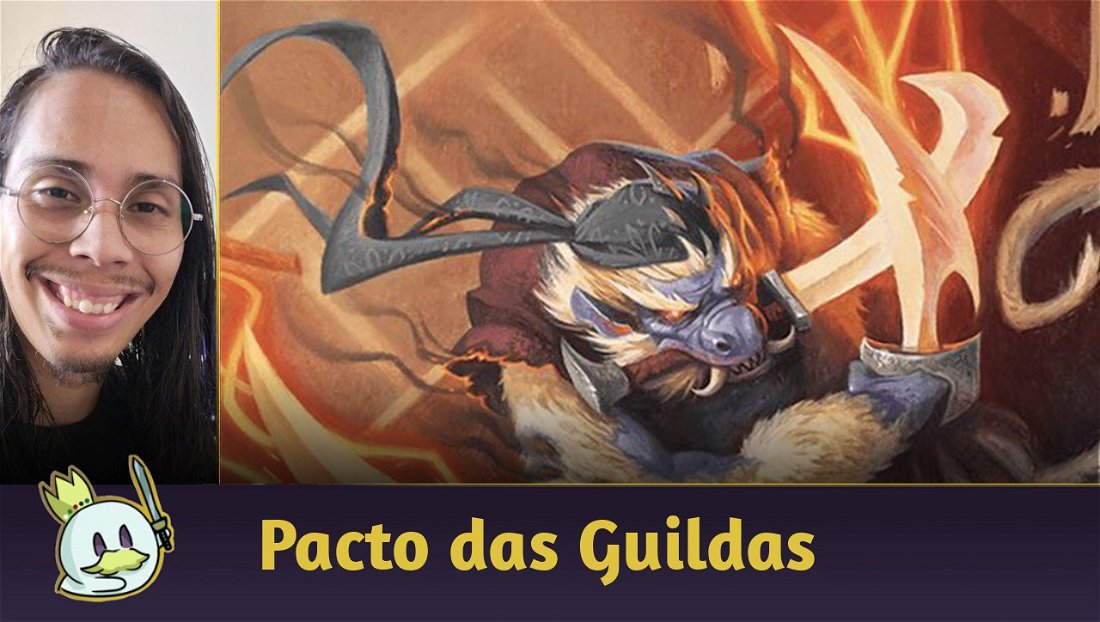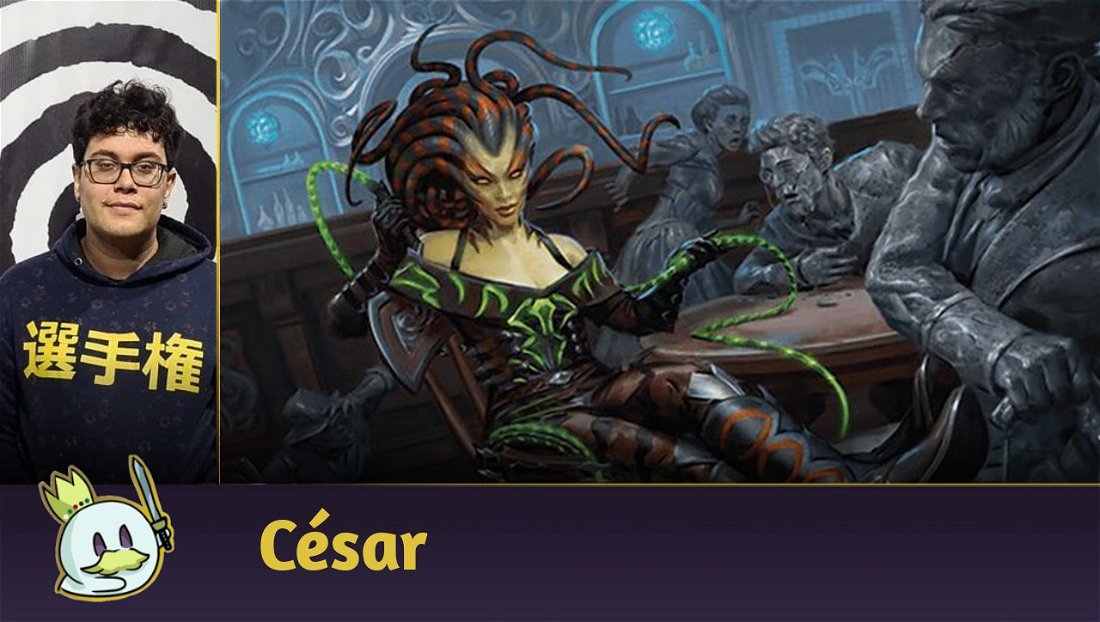Introduction
Hey, guys, how are you?
Now that 2024's first quarter has passed, the latest Magic: The Gathering set is finally here: Outlaws of Thunder Junction (we'll call it OTJ) is the first MTG set that features a "wild west" style, or a "western" theme.
In this article, we'll discuss its mechanics, archetypes, and main cards, removals, and mana fixing tools available in Limited events (Pre-Release, Sealed, or Draft).
So, let's head on to the closest "saloon", order a drink, and start planning our strategies to defeat our opponents!
Ad
Outlaws of Thunder Junction
Before we discuss this set's mechanics, it is important to stress that there are four different symbols in it. If you want to check out more details about it, click here.
Besides the fact this is an entirely new plane theme-wise, its mechanics are also entirely new. Let's discuss the new mechanics in OTJ.
OTJ Mechanics
Outlaws
The first mechanic we'll discuss will be Outlaws. Outlaws encompass the following creature types: Assassins, Mercenaries, Pirates, Rogues, and Warlocks. This mechanic will focus on these creature types, and on triggering their effects:

Committing a Crime
In a place where rules matter very little, Committing Crimes is a way to survive. In this set, Committing a Crime refers to using spells and activated or triggered abilities to target one or more of the following options:
- An opponent;
- A spell or ability controlled by your opponent;
- A permanent controlled by your opponent;
- A card in your opponent's graveyard.
You can only consider a crime has been committed if you target one of the options above.

Spree
Spree is a new mechanic that allows us to cast spells and choose the effects that are better for us at that moment. If we have enough resources, we can also stack these effects, which will make the card in question even stronger.
We must pay the cost of each effect we pick, which means this cost will go up any time we choose a new effect.
As a game effect, this will be a very welcome versatility in Magic in general, and it will be even more important in Limited, considering that, in this game mode, our access to cards is extremely restricted. Another important thing is that, as games tend to get stuck (and we end up hoarding a lot of mana as a result), Limited, in general, allows us to extract as much value as possible out of this type of card.
We should watch Final Showdown carefully, as it is a way to break our opponent's board without losing our best creature. This will allow us to set up a powerful attack later, which will significantly impact matches in which the game state is too balanced for each player.

Mounts and Saddle
No proper wild west setting is complete without a saddled mount to carry your characters.
Saddle is similar to Crew (and Vehicles), but you can only play it at sorcery speed; the number that comes after this mechanic determines the total combined power you need to Saddle that creature.
Ad
After activating Saddle, Mounts get abilities that trigger when they attack or deal damage. This can create enough disruption to break a "stuck" game state.

Plot
Plot is a new mechanic in this set that allows us to pay a cost and exile a card to cast the card in question later on (in another turn), whenever you'd be able to play a sorcery.
Plotted cards can trigger new effects, or even cost less than they originally do - but you'll only be able to cast them later.

Main Archetypes
Azorius Plot
In blue and white, the game plan will be to focus on not using spells from your hand on your turn, and only using permanents that trigger abilities under these conditions, like Stoic Sphinx, Jem Lightfoote, Sky Explorer, and Wrangler of the Damned.
Flash creatures, like Aven Interrupter and Holy Cow, are quite efficient in this archetype, besides Plot spells, which will allow us to cast our exiled spells - Sheriff of Safe Passage or Visage Bandit - and instants, which we'll use on our opponent's turn.
Other cards that are interesting in this archetype are permanents with abilities that allow us to spend our mana and create some value while they enable our main abilities.
This archetype prioritizes Tempo, and has a good variety of creatures with evasion to deal damage, besides using instants and Flash cards to delay our opponent's game plan.
Fblthp, Lost on the Range is one of the best options for this archetype, considering it has a very strong synergy with our main mechanics.



Orzhov Aristocrats
In black and white, we have an archetype which will focus on sacrificing your permanents: the classic Aristocrats.
In these lists, we want pieces that interact when we sacrifice a creature, pieces that sacrifice creatures, and creatures that have some effect when they die. Other relevant pieces will be cards that play, on the board, more than one permanent (which can be sacrificed later).
So, cards that do more than one of these things, like Baron Bertram Graywater, Prosperity Tycoon, and Boneyard Desecrator, will be critical.
Outlaw Medic, Nezumi Linkbreaker, Rakish Crew, and Lassoed By the Law are some examples of effective cards that create value with the sacrifice mechanic. Treasure Dredger ends up being the perfect engine, as it is useful both to ramp, fix mana, or create ways to sacrifice other cards.
Ad
Ruthless Lawbringer is the most effective removal for this archetype. Gisa, The Hellraiser creates tokens for us to sacrifice if we can use pieces that "Commit a Crime".



Boros Aggro Tokens
In red and white, we have an Aggro archetype that'll focus on filling the board with creatures and dealing as much damage as possible with as many creatures as we can.
The idea will be to look for cards that cost very little mana and create more creatures - and, in this sense, Oltec Matterweaver will be great in this archetype. Brimstone Roundup and Bruse Tarl, Roving Rancher will feed the board constantly, and we can use Outlaws' Fury or Stagecoach Security to take advantage of the board we build.
Great Train Heist can be extremely punitive, particularly when your opponent thinks they don't need blockers. It can determine the result of the match before your opponent can see it coming.
Another feature that stands out are Mercenary tokens that boost other creatures; they're an excellent option with Ertha Jo, Frontier Mentor.
A great card to take advantage of how much mana we have in later turns is Form a Posse, which, besides creating several bodies for us, allows us to set up an incredibly powerful attack if we have a creature with evasion.
Another card that is efficient with Mercenary tokens is Scalestorm Summoner, which creates Dinosaurs that are relatively strong whenever we attack.
Taii Wakeen, Perfect Shot will optimize our damage removals, considering it will possibly deal the rest of the damage we need to remove the creature in question, and it will also draw us a card when it deals damage to a creature equal to its toughness. Additionally, it will allow us to deal direct damage more often, as we'll have more Burn with it. It is particularly effective with Terror of the Peaks.



Selesnya Mounts
In green and white, we have an archetype that will focus on using Mounts, and it will include cards that support this mechanic, like Frontier Seeker, Miriam, Herd Whisperer, Intrepid Stablemaster, Shepherd of the Clouds, and other cards that interact with how many Mounts you use or whether you control any. Congregation Gryff, Throw from the Saddle, and Steer Clear are some of these cards.
Ad
This archetype's greatest strength is that we can use the Mounts themselves to Saddle other cards, so we won't struggle with the proportion between Mounts and Saddles as much as we suffer with the proportion between Vehicles and Crew cards.
Fortune, Loyal Steed is an excellent piece for this archetype. When Saddled, it allows you to control your topdeck, and, with cards like Frontier Seeker, it will create value from its triggered ability again.
Ornery Tumblewagg can easily spiral out of control when it isn't answered, and Seraphic Steed, if it can attack while Saddled, can win the game alone with its army of Angels.



Dimir Crimes
In blue and black, we have an archetype that is more like a Midrange deck, and will focus on Committing as many Crimes as possible. The strategy with this archetype will be to hold off your opponent's first turns, and develop your pieces from mid to late game with a strategy that centers value, removals, and tempo plays.
Duelist of the Mind and Harrier Strix are ways to recycle your hand to look for answers and avoid having too many lands in your hands. The Key to the Vault is another valuable card for this archetype, considering it gives us a relevant amount of card advantage.
Spree cards are excellent options: Phantom Interference, Unfortunate Accident, and Rush of Dread.
Vadmir, New Blood and Lazav, Familiar Stranger are viable options to put pressure on your opponent, and they develop naturally in this archetype.
Gisa, the Hellraiser and Kaervek, the Punisher are the cards that have the biggest potential in this archetype. Kaervek will let you use the spells in your graveyard, and Gisa will create bodies, besides the fact it is well-protected by its Ward.
Satoru, the Infiltrator is an alternative if we have too many Plot cards, considering it can take advantage and extract as much value from your hand as possible.



Ad
Two Spells Izzet
In blue and red, we have an archetype that will focus on playing more than one spell per turn, this way triggering the effects on our permanents and creating value. One pro is that we can use Plot cards later on, and trigger their effects.
Geralf, the Fleshwright is a great card, considering it can create a true army of tokens while we play more than one spell per turn. Brimstone Roundup is similar, and can go on the board for its Plot cost.
Malcolm, the Eyes will allow us to draw cards with Clue tokens, and Kraum, Violent Cacophony can easily spiral out of control in this archetype, as it will set up our first turns, and set up our following turns by refilling our hand and growing.
Breeches, the Blastmaker has a lot of potential if you have an artifact source that creates a lot of value by copying spells or dealing damage, like Malcolm, the Eyes.
Rodeo Pyromancers is a viable option to develop your game plan, considering it allows us to ramp and Plot. It is relevant in this archetype to create the mana we need to cast our second spell in our turn.
Razzle-Dazzler is incredibly aggressive, and demands an answer from your opponent; otherwise, it will escalate exponentially.
Shackle Slinger can remove, from combat, your opponent's main threats, and like so buy you time so you can develop your game plan later on.



Simic Plot
In blue and green, we have an archetype that focuses on Plotting, and, in this sense, Doc Aurlock, Grizzled Genius will be your main card, considering it allows you to *Plot cards for less mana - which means you'll put your most impactful creatures in play earlier on.
Fblthp, Lost on the Range is everything this deck wants; this card lets us control our top deck, and lets us access to more cards.
Basically, we'll use several cards that put heavy cards on the board for less mana, thanks to Doc Aurlock, Grizzled Genius or ramp.
Railway Brawler, besides being a strong body on the board, makes all your creatures even bigger.
Freestrider Commando, Djinn of Fool’s Fall, and Spinewoods Paladin really match this type of strategy, and we can Plot them to play them on an impactful turn later on.
Rise of the Varmints is a great option when our graveyard is full and we have already traded several creatures, considering it will bring an unexpected volume to our board.
Visage Bandit gives this deck an incredible versatility because it can be ramp or even copy a Railway Brawler that is already on the board, which will be even more impactful.
Ad



Rakdos Outlaws
In black and red, we'll have an archetype that will take into account creature types that are also Outlaws.
So, we'll use cards that have extra effects or are better if we control Outlaws, and develop this archetype with creatures under the Outlaw umbrella.
Cards like Hellspur Posse Boss or Rakish Crew do exactly what this archetype wants, considering they make our board bigger and give effects to Outlaws. Mine Raider fixes your mana or ramps with Treasures.
At Knifepoint is another enchantment that gives an ability to Outlaws, and can also feed your board.
Vial Smasher, Gleeful Grenadier, besides having an aggressive body, lets you use your Outlaws to chip away at your opponent's life points.
Laughing Jasper Flint offers you a significant number of resources while it attacks the resources on your opponent's deck if they don't have any answers.
Rakdos, the Muscle and Akul the Unrepentant, despite not interacting with this mechanic, extract a lot of value from cards that put more bodies on the board, be it by sacrificing cards to put creatures on the board, or by protecting other creatures, in Rakdos' case. Additionally, they're also considered Outlaws.



Golgari Graveyard
In green and black, we have an archetype that focuses on your graveyard. We want cards that Mill other cards and have another effect to feed our graveyard and create value. We can use Patient Naturalist to guarantee our lands, Bristlebud Farmer, which feeds our graveyard and moves the best permanent in there to our hand, or Smuggler's Surprise, which can feed the graveyard and already put on the board your most impactful creatures.
Additionally, we want cards like Stubborn Burrowfiend, which, despite also feeding the graveyard, is more aggressive when Saddled.
Rise of the Varmints is also interesting in this archetype, considering most of this deck will be creatures, and it will build a considerably sized army on your board, which can turn games around.
Ad
Honest Rutstein is excellent; it can bring back your best resource, and, at the same time, it discounts the cost of your creatures.
Badlands Revival is perfect to Reanimate that creature you Milled, which will now be on your battlefield.
Spinewoods Armadillo is a great option for this archetype because early on it lets us fix our mana while it gives us life and puts itself in the graveyard. It is an excellent Reanimate target.
Vaultborn Tyrant is an excellent option to have in the graveyard with this archetype, besides being one of the best threats in these colors. Vraska, the Silencer optimizes our removals by turning our opponent's creatures into Treasures.



Power 4 Gruul
In green and red, we have the return of power 4. This archetype uses cards that trigger effects if you control creatures with power equal or higher than 4.
In general, this archetype will behave like a Stompy deck: it will play creatures at the top of its curve and always try to attack with creatures that are each time stronger and stronger. We'll use cards like Scalestorm Summoner to grow our board, Bristlepack Sentry as an aggressive body that costs very little mana, and Outcaster Trailblazer to refill our hand, with the advantage of it already being a creature with power 4.
Cards that give us counters will also be incredibly efficient, and will make our board stronger so our creatures can get enough power to trigger their abilities.
Ornery Tumblewagg and Bristly Bill, Spine Sower are excellent to grow our board.
Goldvein Hydra, Terror of the Peaks, Railway Brawler, Stingerback Terror, and Calamity, Galloping Inferno are all incredible "top of the curve" cards for this archetype.
It is also important to get more mana. Hardbristle Bandit will be the most common source. However, Jolene, Plundering Pugilist and Roxanne, Starfall Savant are great pieces to help us develop our game plan.



Ad
Mana Fixing
Besides fast lands of enemy colors, we have deserts, which means it will be relatively easier to fix our mana base, considering we'll have common dual lands for all color pairings.
Besides dual deserts, we have Conduit Pylons, which lets us filter mana, and Mirage Mesa, which lets us choose the mana color it will create.
As this set's mana base is excellent, I believe many archetypes will fuse with one another, and therefore they'll be played with 3 colors.

Fomori Vault can be a very effective land at later stages of the game for decks that can create Treasure tokens, considering it can filter your top deck and let you select the best card for you at that time.

Besides lands, we also have some other options to fix our mana with the artifacts in this set - Oasis Gardener gives us one mana, and Silver Deputy looks for a basic land or a desert and puts it on the top of our deck. It is particularly efficient in decks that interact with the number of deserts in play.

Other options to fix our curve will be Treasures and creatures that create mana. The two most prominent ways to do this will be Hardbristle Bandit and Mine Raider, which we've already discussed throughout this article.
Removals
Removals are a very relevant feature in this set. Let's see some of them and list the best ones for each color.
White

Bovine Intervention is one of the best removals available in this color.
Final Showdown is incredibly relevant because it is an instant-speed global removal.
Requisition Raid is versatile because it can remove artifacts or enchantments, and/or make your board stronger. It easily fits in your main deck.
Steer Clear is one of the best removals for the Mount archetype.
Blue

In blue, besides traditional Tempo plays, like bounces and spells that tap creatures, we have a way to deal with abilities that remain active even if they're tapped: Stop Cold.
Spree counters, like Three Steps Ahead and Phantom Interference, are much more versatile as they won't be dead cards in your hand every now and again, like most counters do.
Black

In black, Desert's Due is the removal with the biggest potential, depending on the number of deserts you have.
Ad
Unfortunate Accident removes an enemy creature and puts another on the board, which means, its biggest value is its versatility.
Rush of Dread is an excellent way to tip the scales in your favor.
Red

Caught in the Crossfire is an excellent option to deal with aggressive decks. It can considerably reduce the board, as it removes tokens, and also removes 41.9% of the creatures in this set.
Explosive Derailment deals with 86.2% of this set, which makes it an excellent removal.
Scorching Shot can remove 95.8% of this set; only 5 creatures have more toughness than the damage it deals.
Thunder Salvo is a viable option for archetypes that play many spells every turn, and Trick Shot doesn't have an efficient "cost-to-benefit" ratio.
Green

In green, we don't have that many efficient removals. Betrayal at the Vault's greatest pro is that it is an instant, and, at the same time, its greatest con is its mana cost, which is extremely high.
Throw from the Saddle is the most effective removal in this color for this set, particularly in a Mount archetype.
Final Words
OTJ offers us a great variety of possibilities. With a mana base as efficient as this, we can work with 2 main colors and use a third for key-cards. Green has excellent creatures.
Which archetype seems more interesting to you?

I'm quite curious to know how a Mardu deck would work with the sacrifice base and the dynamics of Mercenary tokens.
I hope you enjoyed this article! If you have any questions, tell us in the comment section below.
See you in the next article.














— Kommentare0
Sei der erste der kommentiert